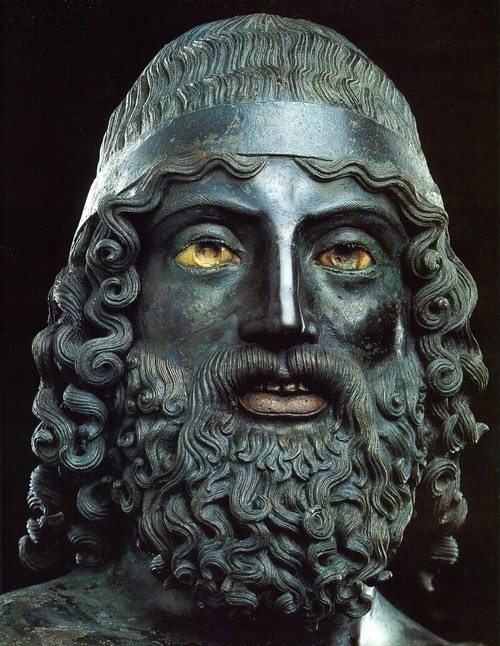#riace bronzes
Text

Calabria, the toe of southern Italy is one of the country’s least-known regions and probably the most underrated one.
Calabria is best known for its beautiful sandy beaches along the Tyrrhenian and the Ionian Sea, and its dramatic cliffs, coves, and rock formations: 800 km of coastline, stunning turquoise waters and green hills adorned with olive, orange, and lemon trees.
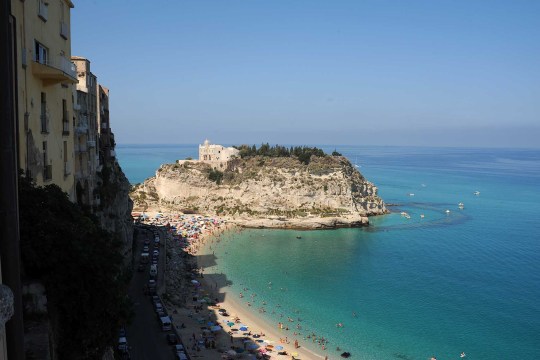
The heart of the region offers a pure and unspoiled scenery, comprised of thick forests, dotted with canyons, streams, and waterfalls and three national parks: Aspromonte, Pollino (UNESCO heritage site), and Sila.
The warm weather, the wild and mysterious nature, the strong and genuine flavors of local food and the vestiges of its ancient origins, when it was a colony of Greece, make Calabria an ideal destination all year around, without the long-haul flights of more exotic destinations.
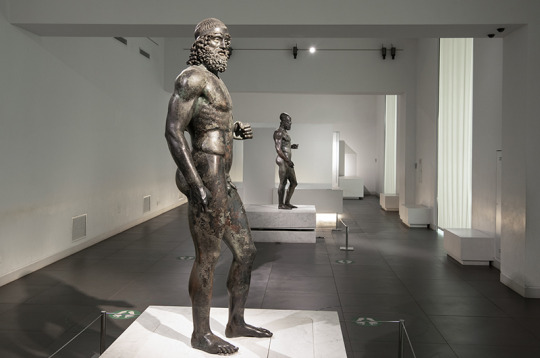
Art lovers cannot miss the famous Riace bronzes, that were found in the Ionian Sea near Riace in 1972 and exhibited in the National Museum of Reggio Calabria. These beautiful statues, probably two warrior heroes larger than life-size, are a fine example of classical Greek sculpture.
Reggio's ancient history predates the Greeks, who settled this strategic location at the exact center of the Mediterranean in the 8th century BC. They called their colony Rhegion, which was subsequently Latinized by the Romans and transformed through the ages under the area’s various rulers.
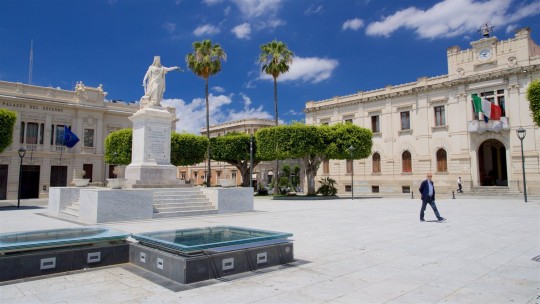
In Reggio Calabria, the lungomare or waterfront is a great place for a stroll, either down at beach level or along the upper promenade, which flanks what is commonly referred to as Via Marina, a pair of north-south coastal roads laid out in boulevard style. The approximate two-kilometer strip of land between serves as a lovely city park the length of the downtown area.
Stately mansions face this public garden and the strait beyond.
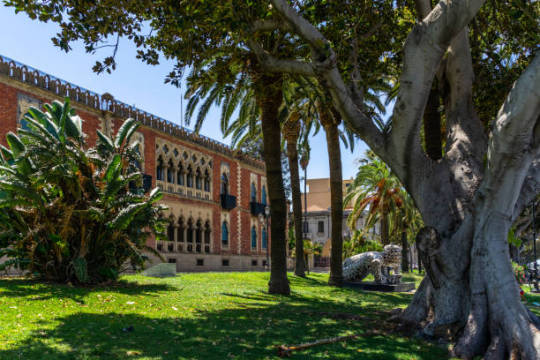
The seafront elegant, panoramic promenade lined with palm trees, with its views across the Messina Strait, which divides the Italian peninsula from the island of Sicily, to Mt Etna is one of the most atmospheric places for a walk.
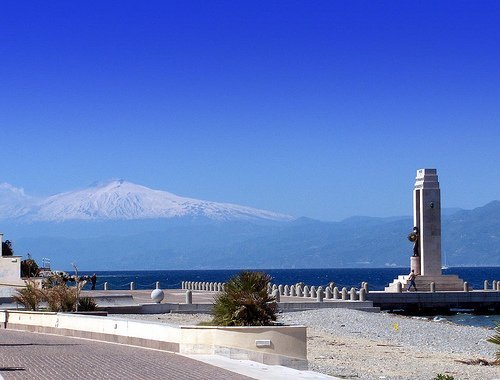
Capo Vaticano is considered one of the 100 most beautiful beaches in the world: a long beach of fine sand with crystal clear waters, surrounded by ancient trees.
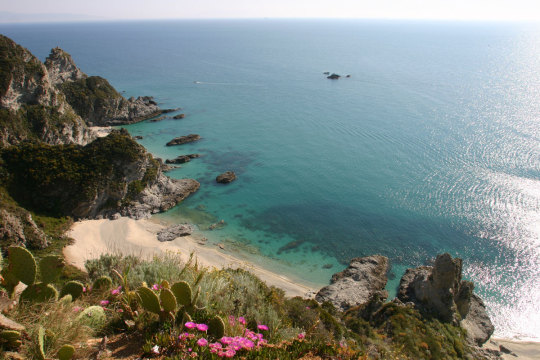
Tropea, a puzzle of lanes and piazzas, is one of Calabria’s most attractive towns. It is set in a dramatic spot on a cliff where the houses seem to blend into the rock. Tropea is famed for the spectacular sunsets, between the cliff and the rocky promontory with the church of Santa Maria dell’Isola.
Stacked high up on a sea cliff, there is Pizzo with its unique Church of Piedigrotta, entirely carved out of tuff stone.
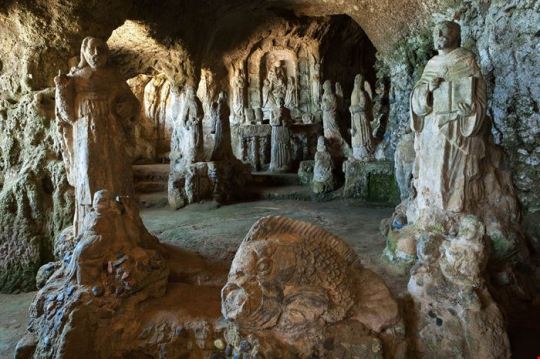
Chili pepper, ‘nduja and Tropea onions are the first ingredients that come to mind when talking about Calabrese cuisine.
Calabrians love chilli peppers and they add it in everything, from pasta to ice-cream! Every September, the “peperoncino” festival takes place in Diamante to celebrate its locally produced food.
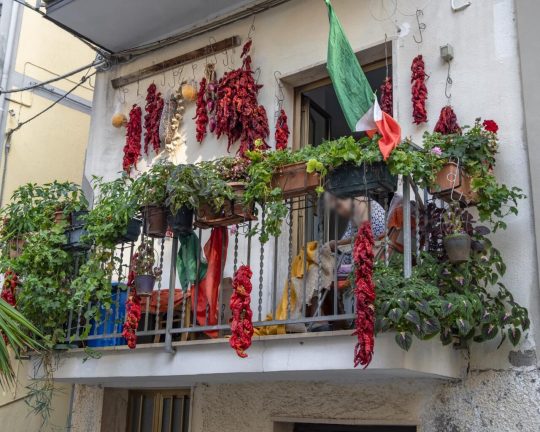
‘Nduja is the Calabrian version of salami. A spicy, spreadable cold cut with chilli peppers (of course) and spices.
Tropea’s red onion is known for its mild, sweet flavour. In fact, these onions are so famous that cipolla di Tropea has become a Calabrian symbol.
Follow us on Instagram, @calabria_mediterranea
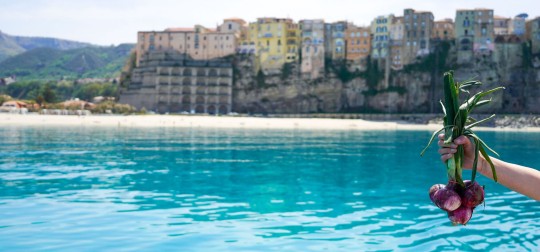
#calabria#italy#italia#south italy#southern italy#mediterranean#italian#tropea#reggio calabria#red onion#chili peppers#chili pepper#chili#ancient art#ancient#history#ancient history#bronzi di riace#riace bronzes#magna graecia#greek#greek art#sculptures#bronze#landscape#europe#italian landscape#italian landscapes#landscapes
132 notes
·
View notes
Link
31 notes
·
View notes
Text

Bronzi di Riace
22 notes
·
View notes
Note
25 for the artists asks
25. Based on your recent reference searches, what would the FBI assume about you?
Just that I'm into lots of figurative sculpture. XD My searches are all for ancient Greek bronzes and 19th-century European sculptors right now.
1 note
·
View note
Text


The Riace Bronzes were found in the sea off the coast of Italy in 1972. They are life sized, bearded warriors cast in the 5th century BCE. Ancient Greek bronzes rarely survive as many were later melted down. We only really know how Ancient Greek bronze sculptures looked like because the Romans were copycats.
Reggio di Calabria, Italy
#ancient art#Ancient Greek#Ancient Greece#bronze#statue#art history#Italy#Italia#Reggio calabria#travel#original photography#iphonography#museum#archaeology#photographers on tumblr#photography#lensblr#history#wanderingjana
523 notes
·
View notes
Text




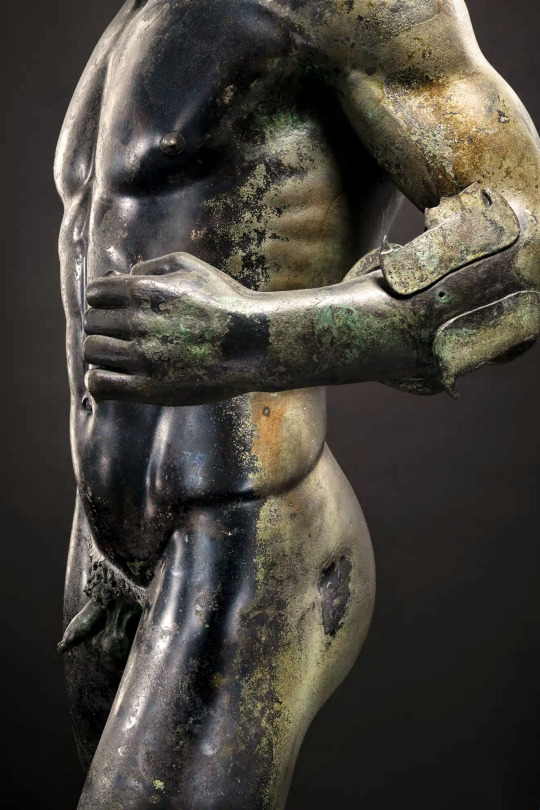


bronze statue - lips and nipples are made of copper, the teeth are silver and the eyes formed from calcite - 198 cm (78") high - Greek - - Riace, Calabria - cast c.460-450 BCE
613 notes
·
View notes
Text
Discovery of bronzes rewrites Italy's Etruscan-Roman history

Italian authorities on Tuesday announced the extraordinary discovery of 2,000-year-old bronze statues in an ancient Tuscan thermal spring and said the find will "rewrite history" about the transition from the Etruscan civilization to the Roman Empire.
The discovery, in the sacred baths of the San Casciano dei Bagni archaeological dig near Siena, is one of the most significant ever in the Mediterranean and certainly the most important since the 1972 underwater discovery of the famed Riace bronze warriors, said Massimo Osanna, the Culture Ministry's director of museums.
Thanks to the mud that protected them, the two-dozen figurines and other bronze objects were found in a perfect state of conservation, bearing delicate facial features, inscriptions and rippled tunics. Alongside the figures were 5,000 coins in gold, silver and bronze, the ministry said. Read more.
2K notes
·
View notes
Photo


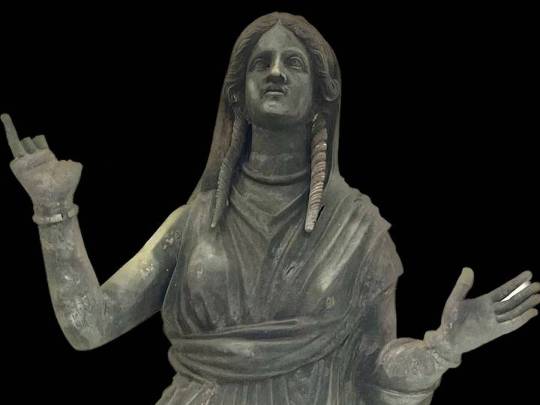
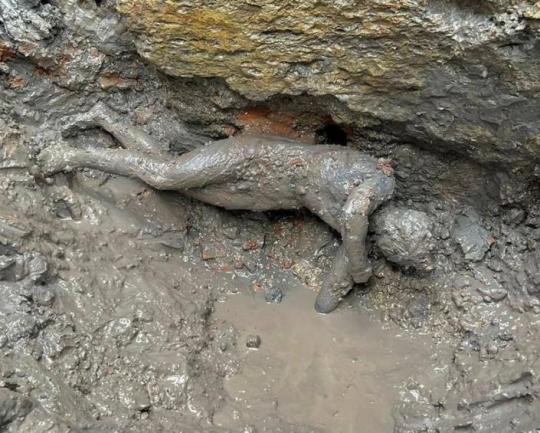


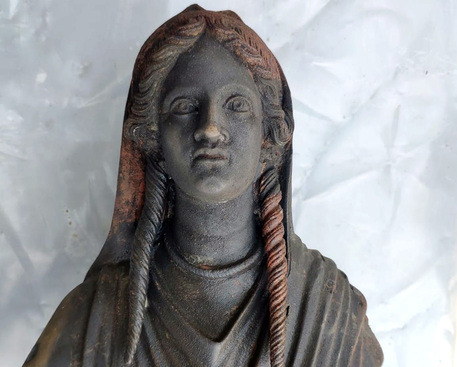
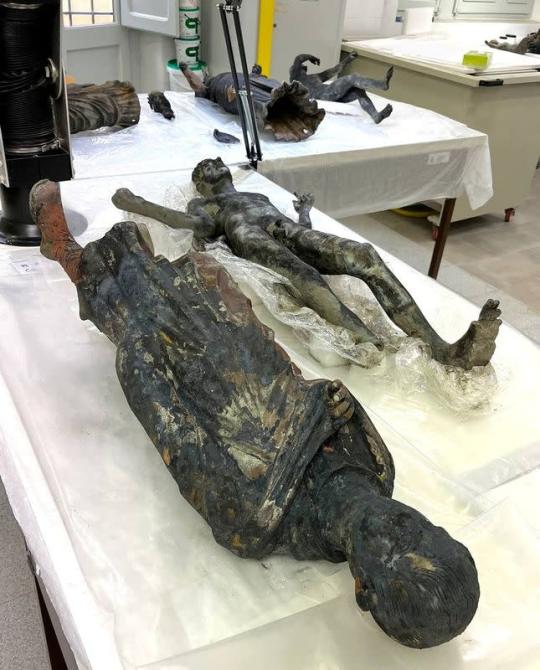

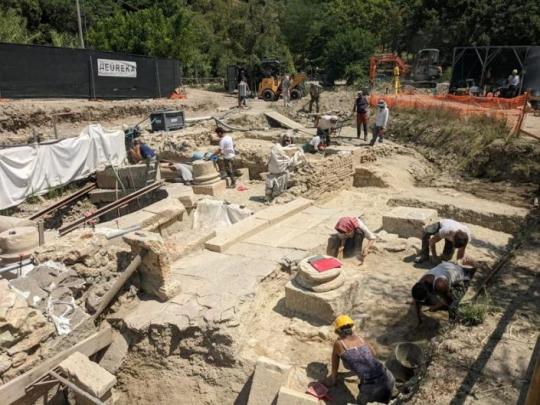

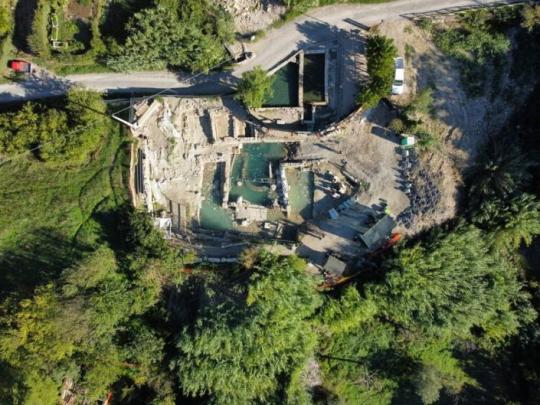
Italy Hails 'Exceptional' Discovery of Ancient Bronze Statues in Tuscany
Archaeologists in Italy have uncovered more than two dozen beautifully preserved bronze statues dating back to ancient Roman times in thermal baths in Tuscany, in what experts are hailing as a sensational find.
The statues were discovered in San Casciano dei Bagni, a hilltop town in the Siena province, about 160 kilometres (100 miles) north of Rome, where archaeologists have been exploring the muddy ruins of an ancient bathhouse since 2019.
"It is a very significant, exceptional finding," Jacopo Tabolli, an assistant professor from the University for Foreigners in Siena who coordinates the dig, said on Tuesday.
Massimo Osanna, a top culture ministry official, called it one of the most remarkable discoveries "in the history of the ancient Mediterranean" and the most important since the Riace Bronzes, a giant pair of ancient Greek warriors, were pulled from the sea off the toe of Italy in 1972.
Tabolli said the statues, depicting Hygieia, Apollo and other Greco-Roman divinities, used to adorn a sanctuary before they were immersed in thermal waters, in a sort of ritual, "probably around the 1st century AD".
"You give to the water because you hope that the water gives something back to you," he said of the ritual.
TIME OF CONFLICT
Most of the statues date to between the 2nd century BC and the 1st century AD, a period of "great transformation in ancient Tuscany" as it switched from Etruscan to Roman rule, the Culture Ministry said in a statement.
It was an "era of great conflicts" and "cultural osmosis", in which the Great Bath sanctuary of San Casciano represented a "unique multicultural and multilingual haven of peace, surrounded by political instability and war," the ministry said.
The statues were covered by almost 6,000 bronze, silver and gold coins, and San Casciano's hot muddy waters helped to preserve them "almost like as on the day they were immersed," Tabolli said.
The archaeologist said his team had recovered 24 large statues, plus several smaller statuettes, and noted that it was unusual for them to be made out of bronze, rather than terracotta.
Tabolli said this suggested they came from what he called an elite settlement, where archaeologists also found "wonderful inscriptions in Etruscan and Latin", mentioning the names of powerful local families, the ministry statement added.
According to Culture Minister Gennaro Sangiuliano, the "exceptional discovery ... confirms once again that Italy is a country of immense and unique treasures".
The ministry said the statues have been taken to a restoration laboratory in nearby Grosseto, but will eventually be put on display in a new museum in San Casciano.
#Italy Hails 'Exceptional' Discovery of Ancient Bronze Statues in Tuscany#bronze#roman bronze statues#ancient artifacts#archeology#archeolgst#history#history news#ancient history#ancient culture#ancient civilizations#ancient tuscany#ancient bath house#roman history#roman empire
1K notes
·
View notes
Text
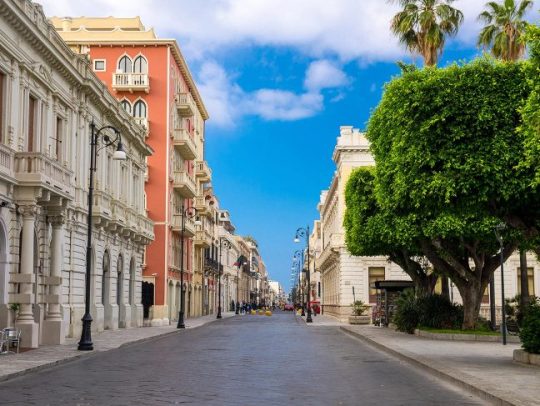
Reggio Calabria, Calabria, Italy
In their haste to reach Calabria’s beaches, many travelers mistakenly overlook the region’s largest city, Reggio. This handsome and little-touristed place of around 200,000 inhabitants is built on slopes overlooking the Strait of Messina (the strait between Calabria and Sicily).

The city was founded by the Greeks around 730 B.C., who settled this strategic location at the exact center of the Mediterranean in the 8th century BC. They called their colony Rhegion, which was subsequently Latinized by the Romans and transformed through the ages under the area’s various rulers.

Later, Reggio became an important center of Byzantine culture until being occupied by the Arabs in the 10th century. Spanish rule ended with Napoleon’s invasion in 1806.
The city thrived during the late 18th century, when the Lungomare Falcomatà, “the most beautiful kilometer of Italy,” a long seaside promenade, was constructed.

On a visit in 1847, the English artist and writer Edward Lear wrote: “Reggio is indeed one vast garden, and doubtless one of the loveliest spots to be seen on earth. A half-ruined castle, beautiful in colour and picturesque in form, overlooks all the long city, the wide straits and snow-topped Etna volcano on the island of Sicily beyond.”
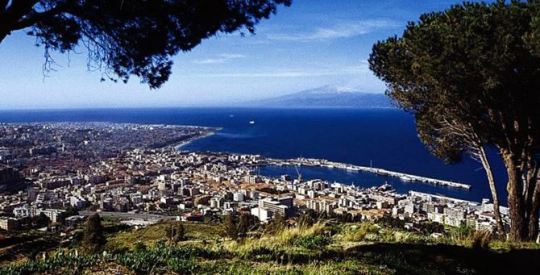
An earthquake destroyed large areas of Reggio in 1908, and much of it was rebuilt in the art nouveau style. Lining the Corso Garibaldi, the principal thoroughfare, these elegant buildings give the city its singular charm.

Reggio is home to one of the most important archaeological museums, the prestigious National Archaeological Museum of Magna Græcia, dedicated to Greater Greece (the name given by the Romans to the Greek-speaking coastal areas of Southern Italy).
The Museum houses the Bronzes of Riace, rare examples of Greek bronze sculptures which became one of the symbols of the city.

These statues spent more than 2,000 years submerged under the waves of the Ionian Sea. A diver discovered the pair in 1972 and within a week the bronzes were recovered by an elated Italian government. How often do you get a chance to see two 2,500 year-old bronze warriors from classical Greece?
Follow us on Instagram, @calabria_mediterranea
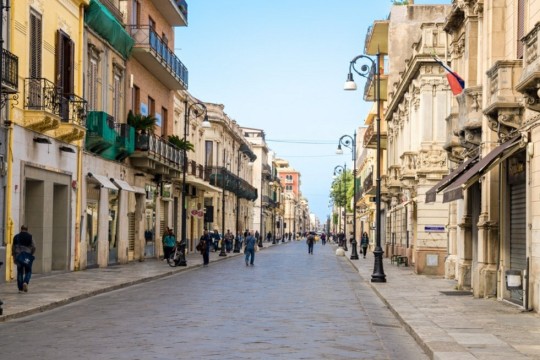
#reggio calabria#calabria#italy#italia#south italy#southern italy#mediterranean#mediterranean sea#sea#architecture#art nouveau#magna graecia#magna grecia#museum#art#ancient#ancient art#history#greek#greek art#bronzi di riace#bronze#sculptures#italian#europe#landscape#italian landscape#landscapes#city#cityscape
58 notes
·
View notes
Text
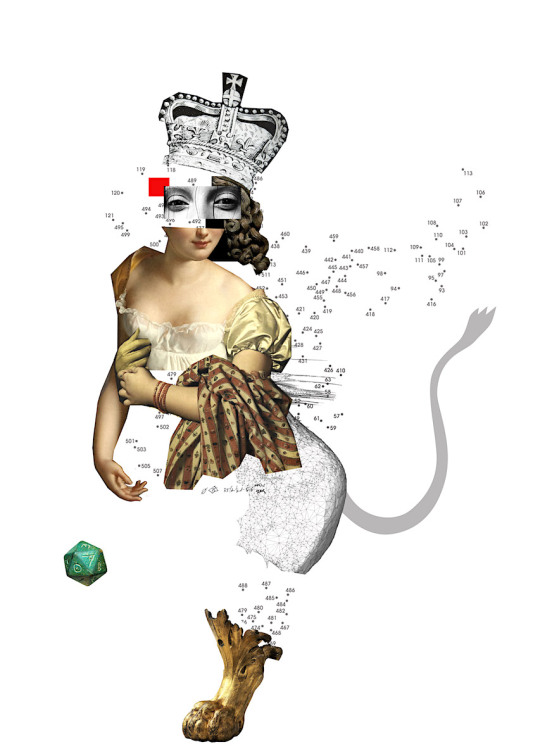
eucanthos
elemental traces no.10 ∈ 42 / enigma probability
Codie Young by Boris Ovini Exhibition Magazine no3 2013
Piero Fornasetti crown
Gold guilded French furniture foot 17-18th c.
François Gérard: Portrait de Juliette Récamier, 1805
Ingres: Madame Panckoucke, 1811
Sølve Sundsbø 3d Head Cape [geodesic glitch]
Riace Warrior bronze (hair)
Faience stone oracle dice with Greek letters, Roman, 2-3rd c.
https://www.metmuseum.org/art/collection/search/253530
thnx alepouditsa & aleyma [the dice was important]
#eucanthos#collage#sphinx#42#Codie Young#Piero Fornasetti#Francois Gerard#Ingres#Sølve Sundsbø#dice#enigma#monsters
44 notes
·
View notes
Text

In 1972, while on vacation, Stefano Mariottini, an engineer from Rome, snorkeling off the coast of Monasterace near Riace, noticed a human hand sticking out of the sand. Deciding that it was a corpse, he called the police. From the bottom of the Ionian Sea, two statues of "Warriors from Riace" were raised - ancient Greek bronze statues of the 5th century BC. Just a great photo
53 notes
·
View notes
Text
3 notes
·
View notes
Text

Riace Bronze Warrior
21 notes
·
View notes

